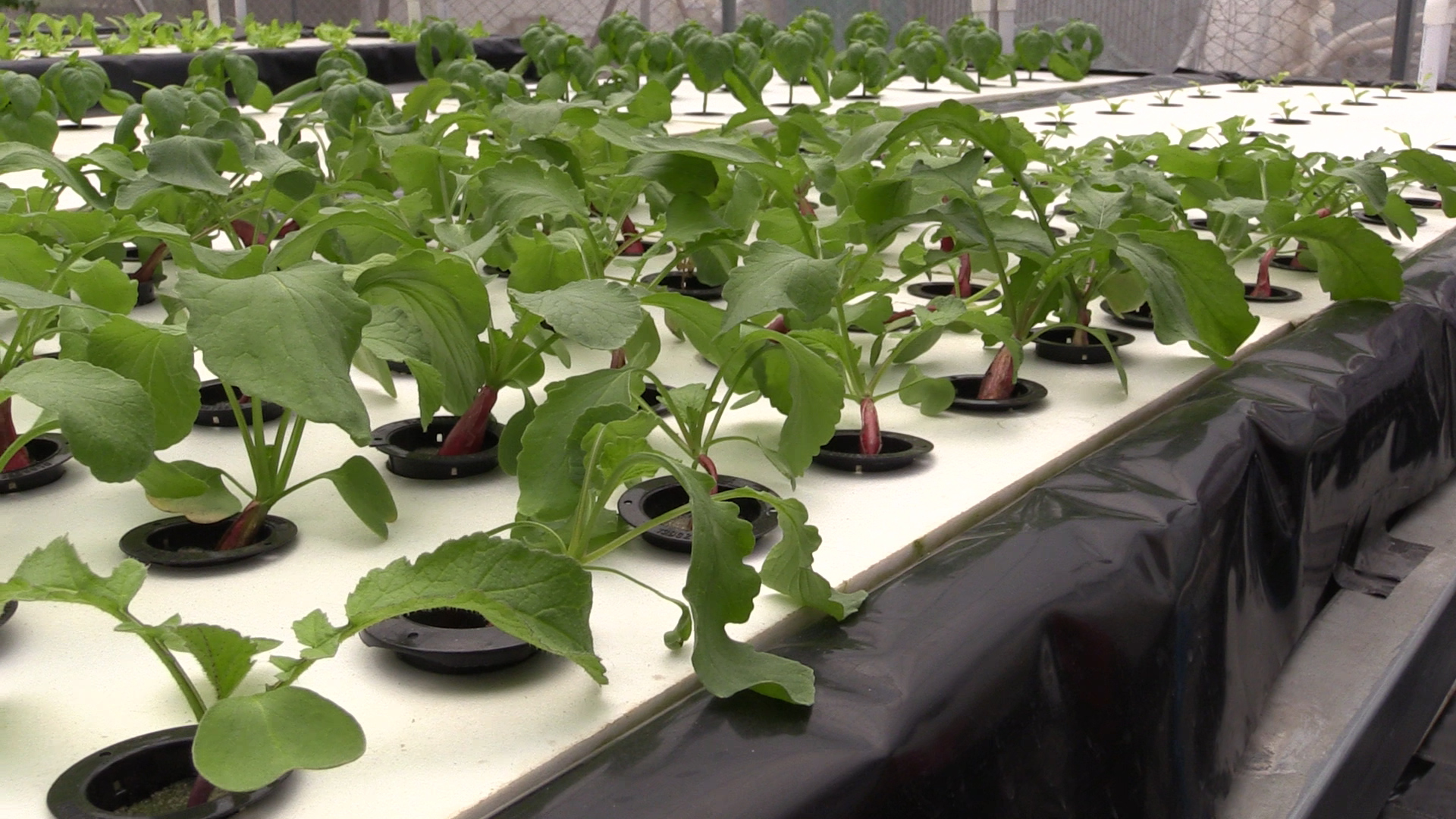Hydroponics, an alternative way for local agriculture
Reporters: Henry Lee, Zoe So, Kanis Leung
Editor: Yoyo Chan
Loosening the soil, seeding, daily irrigation and harvesting – these are the inevitable stages in the farming process with which we are familiar. But the introduction of hydroponics and aquaponics, in which plants are grown in water without soil, take a lot of the toil out of the first two stages.
Hydroponics was introduced to Hong Kong since 1980s, but it has not become popular until Vegetable Marketing Organization started up a Controlled Environment Hydroponic Research and Development Centre in Cheung Sha Wan in 2012. The 2,500 square feet government-funded centre now produces around 3.5% of Hong Kong’s agricultural industry, together with other local farmers.
Using Japanese technology with 24/7 computer monitoring cost nine millions to start up. The computer system creates microclimate for the plants, controlling the amount of nutrients, levels of carbon dioxide and the temperature, involving very less human labour like traditional farming, thus it is comparatively much more expensive for the renovation of the site and the high technology. This indoor approach also allows vertical farming which produces more vegetables than traditional.
Instead of following the Japanese approach where the government is trying to promote, Janet Chan Yuet-kwai took references from other countries and set up a simpler model by buying tools from Amazing Green , a company promoting hydroponics. Covering 10,000 square feet, Chan’s site costs around HKD 250,000 to set up thousand dollars, but it involves more human efforts than computer monitoring method to take care of the vegetables.
Amazing Green’s publicist, Kit Lau thinks that hydroponics is more a more suitable farming method for Hong Kong because it saves space and is something citizens can try at home. Lau says there is 70 per cent less water loss than in conventional farming, and saves on the labour required for ploughing and irrigation.
However, Simon Chau Siu-cheung, founder of the environmental group Green Power has doubts about the quality of hydroponic products, because natural nutrients in the soil cannot be easily substituted by mineral nutrients, which are chemical rather than organic. “The risk of using this new technology, we still don’t know,” he says.
Aquaponics, a combination of raising fish and hydroponics, attempts to address these concerns. The system is more organic as vegetables absorb natural nutrients from fish waste in the water.
Whether or not hydroponics and aquaponics can be a viable and safe alternative to traditional farming on a larger scale remains to be seen. But as a way for the elderly, disabled and city dwellers in urban apartments to get involved in growing their own food, the potential is undeniable.












































